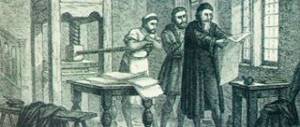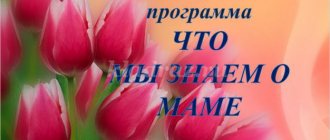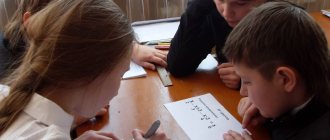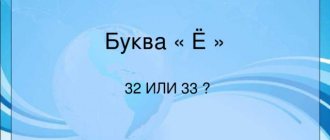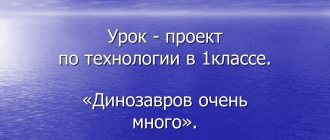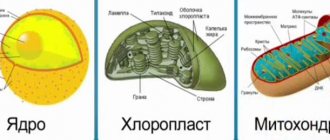How a book is born
Our series of posts about publishing opens with Irina Gusinskaya, deputy editor-in-chief of Alpina Publisher.
We asked Irina a few questions about the first, most important stage of publishing a book - finding a project.
— Irina, where do project managers find future books?
— The path of a book to the publishing plan is often convoluted and ambiguous. However, several key sources can be identified:
• Amazon and other foreign ratings, including professional ones, of the publishing community. • Mailings from foreign copyright holders and literary agents: we receive them constantly, every day. By the time of the London and Frankfurt book fairs we are drowning in a sea of catalogues. • Graduation (via an application form on a website/social network, etc.): excerpts from manuscripts and full manuscripts are sent by people who have already written something or are in the process of doing so and are already concerned about finding a publisher. We receive an average of 600 applications per year for publishing books, of which we publish no more than two. • Recommendations from colleagues/friends/acquaintances: “But my best friend wrote a book, I gave him your email.” • Our authors: sometimes write more than one book. • Producing (here the sources of ideas are supplemented by surfing on popular topics and characters in the media environment) - this is how the most non-standard and favorite projects appear in the plan.
Next, we evaluate future projects according to the following criteria: • the topic and main idea of the book; • compliance with its editorial policy; • relevance/value/novelty of content; • author's style; • author; • the situation on the topic in the market; • commercial potential; • project budget (difficulties of preparation); • features of sales and promotion.
If a book at the synopsis level or a completed manuscript meets the criteria listed above, then I or any other member of the editorial board puts it on the agenda for the next meeting.
— The editorial council meets once a week. How do you prepare for it? How many books do you review at the meeting?
— Since the lion’s share of my job responsibilities is the search for projects, I prepare non-stop for the editorial board. I order manuscripts, look for ideas, talk with potential authors, etc. – I bring already formed concepts or books to the editorial board; it is important to find out the opinions of my colleagues as early as possible in order to adjust the vector if necessary. The agenda of the editorial council has undergone changes, but now we have settled on 15 points: after all, everyone has other work to do, and studying and forming your opinion about 15 books is a task for several hours of thoughtful reading.
— Which author is easier or more profitable to publish: Russian or foreign?
— From the point of view of energy costs, it is usually easier to buy the rights to publish a finished project: translation, purchasing the layout (if necessary), editing, proofreading, layout, cover design - and voila, you already have a book. You can write on the cover (when it is true, of course) that it is a New York Times bestseller and has sold more than a million copies worldwide, thereby preparing the reader for a meeting with a literary work that has already proven itself abroad.
The Russian author is divided into two large categories: the widely_known author (perhaps in narrow circles) and the not yet_so_widely_known author. The tactics here are usually different. There is a hunt for a well-known author, while at the same time other publishers are also not averse to getting a book from a person with a name in their portfolio and confidently selling a couple of dozen copies. It happens that an author with a name did not plan to write anything, and he still needs to be seduced into a book (the story with “Beauty Myths”). It happens that he was thinking about a book, and then we successfully arrived (a striking example is Mikhail Labkovsky). It happens that I wasn’t thinking about a book at all, but I liked the idea, and it turned out to be an excellent publication (“Development of Memory Using the Methods of the Special Services”). And it happens that I wrote on my blog and didn’t consider myself a writer at all, but then I came and convinced me (“An autopsy will show” by Alexey Reshetun).
The author is not yet_so_widely_known, as a rule, he is an expert in his field and is extremely interested in using the book as a tool for self-promotion. Since Russian fees, especially for non-fiction, are not comparable, for example, with American ones, the main reason for a Russian author to start writing something at all is an irresistible desire to share knowledge and establish his authority in the industry. The book (of course, a good and efficient one) still copes brilliantly with these tasks.
In general, there is more work with a Russian author at the initial stage - and this is good, because there is an opportunity to influence the book, make it more “marketable”, aimed at a very specific target audience. But it is a balanced publishing portfolio (including foreign authors) that allows us to successfully compete in the book market.
— How many “Alpin” books do you read in a year? And not “Alpinovskie” ones?
- Oh, great question. Here it is necessary to make a reservation that I practice a special, editorial, scanning method of reading. Otherwise, I would simply not be able to pass through such an amount of information. That is, when I look for books for the editorial board, I look through all the sources listed in the first question: you can imagine that this is a lot, A LOT of information. If the description is of interest, I request the manuscript (or synopsis, whatever is available at this stage) and look through it - table of contents, beginning, middle, end. It immediately becomes clear whether this book is worth paying more attention to. If yes, I read more carefully. I evaluate according to the listed criteria. My problem (as well as every book lover’s) is that it’s hard to stop if the book is interesting. My colleagues have already come to terms with the fact that I sometimes bring to editorial boards books with very dubious sales potential, but which are brilliantly written and researched. Sometimes we experiment and take such books, sometimes they even sell quite well (“Food Battles and Culture Wars”). That is, I logically read not only all the books published by Alpina Publisher, I read/study several times more in order to select those that are published.
At the same time, we must remember that our editorial staff publishes strictly non-fiction literature, because there is also an ocean of fiction - here it helps to regularly monitor new releases from colleagues and raid their stands during book fairs. I'm not talking about a lifetime subscription to Bookmate - my shelf there tends to infinity. Oh, where can I get extra hours in the day to read everything I want?..
- Thank you, Irina. This Friday we will visit the editorial board, tell you who is on it and how managers defend projects, covers and titles are approved.
Summary of the conversation using the presentation “How is a book born?”
Irina Kvitkina
Summary of the conversation using the presentation “How is a book born?”
Educator: Guys, while we offended books, we didn’t even think about how far the future book to get into our hands. But more than one person works book Today we will go on a journey, where we will learn the whole difficult and difficult path of the book .
Show presentation .
1 slide Municipal budgetary preschool educational institution kindergarten No. 24 st. Kavkazskaya municipal formation Kavkazsky district
“How is a book born ?”
Teacher Kvitkina I.A.
Date: May 11, 2020
Art. Caucasian
2015-2016 academic year
Slide 2 Purpose: to give children knowledge of how a book is using computer technology. Bring children to understand that wood is used to make paper for books the labor of many people is spent on making a book introduce the profession of a lumberjack, timber raftsman, and the work of a printing house.
Slide 3 The future book begins its journey in a deep forest.
Slide 4 Lumberjacks were the first to participate in the production of the book . First, they make notches on the trees that need to be cut down; the loggers do not touch the young trees, they still need to grow.
Slide 5 The lumberjacks are very skillful with a loud, sharp chainsaw, and the trees fall to the ground with a roar.
Slide 6 One of the lumberjacks’ assistants is a tractor. Lumberjacks cut off branches, tie them tightly and tie the tree trunks together with iron ropes. After that, the work of the tractor begins, which with great difficulty pulls this heavy load.
7 slide One of the most spacious roads in the forest is the river; logs float along the river like huge fish, sometimes bumping into each other, forming a jam that stops the forest.
8 slide To prevent such congestion, raftsmen vigilantly monitor the movement of the forest. Rafters are workers who float timber down the river. They swim on motor boats to the place of the jam, use long hooks with sharp tips to push and disperse the interlocking logs, and then they again continue their journey along the river.
Slide 9 In turn, these rolls go to the printing house, where there are many workshops. In one, paper of the required size is prepared, in another, text is typed, in a third, paint is prepared, and everywhere special machines operate that are controlled by a person.
Slide 10 This is how blank paper goes into the printing machine and comes out with text and colorful drawings. These sheets are sorted and selected according to pages. Then a special machine makes the binding, i.e. stitches and glues the sheets, and another machine puts the cover on it. Then the books are taken from the printing house to the warehouse where they are stored, and then from the warehouse they are delivered to the store or library.
Slide 11 This is an interesting path the book . A lot of people work on its creation, so books must be treated with care.
Slide 12 thank you for your attention.
Educator: Now you and I have learned that the birth of a book . a book comes into being ? (Children's answers after viewing the presentation )
.
Educator: Since you already know how hard it is to make a book , then I want to give you a new resident in our reading corner - a book , she will live with great pleasure with the guys who will never harm books .
The lesson is over.
Structure of the book. How a book is born. What is the book made of? 2nd grade
Library lesson in 2nd grade
Structure of the book. How a book is born. What is the book made of?
Purpose: To give an idea of the main elements of a book (cover, spine, title page, preface, table of contents, illustration). Instill a love of books and cultural reading.
LIBRARIAN:
A person who loves and knows how to read is a happy person. He is surrounded by many smart, kind and loyal friends. Friends are books. Books meet us from early childhood and accompany us throughout our lives; they force us to improve. A huge world, tempting and diverse, bursts into our room from the pages of our favorite books. A year has passed since you crossed the threshold of our school. We learned, saw, read a lot. Today we will talk about how the book is structured.
I have a book in my hands. What do we see?
– Cover (or binding ). What is it for?
(Children's answers).
- Right. The cover protects the book and pages from damage and gives it an elegant look; it will tell you who wrote the book and what it is called. And if there is a picture, then you can guess what it will be about, what characters you will meet while reading the work.
Open the book: first page of the book - Title page . This is the name of the book and its address. From the text on the title page we learn:
- Who wrote this work?
- What is its title?
- Who drew the illustrations and pictures for this work?
The book is a teacher
The book is a mentor,
A book is an invaluable comrade and friend.
The mind, like a stream, dries up and grows old,
if you let go of the book.
(V. Bokov)
- In what city and in what year did this book appear, what publishing house published the book?
The author usually wants to say a few words to the person who picked up his book. And he does this in the PREFACE. The preface can also be written by another person who shares with the reader his impressions of the book and its author. In ancient times, every story, history was called a “word.” This meaning has been preserved to this day in the word “PREFACE”, that is, what is before the “word”, story or, in other words, before the text. From the preface you can find out what or who this book is about, when and in what country the events take place, and much more. Usually the preface is short and can be read right here on the shelf. And you will immediately understand whether you need to read this book or not.
At the end of the book, its CONTENTS (table of contents) is usually given by chapter or part of the story. And if a book consists of works by several authors, then you can find out about this from the contents, immediately determining on which page the text we need is located.
What is the book made of?
In Russia, in the old days, ordinary people wrote on birch bark, and state papers - decrees and letters - on specially treated thin leather - parchment, which was rolled into tubes - scrolls.
People lacked material that was durable, resistant to sun and moisture, and on which to write. The inquisitive mind of man invented paper. This was a great invention because with the advent of paper, the number of books began to grow rapidly. How is paper made? Of what?
Made of wood. But in order for it to turn into thin white sheets of paper, many people need to work hard. A book is a very valuable thing. People put a lot of work into making it, so you need to handle it with care.
What does it mean to handle with care? What is the book afraid of?
(Children's answers are analyzed).
The book is for reading only. You cannot place an iron or frying pan on it, place it under the leg of a swinging chair, cover a table lamp with it, slobber on sheets of paper, highlight places you like or dislike, or draw on it. The book is very fragile. She is afraid of water, fire, and dirty hands.
But a carefully stored book lives for hundreds of years. After all, everyone is interested in seeing what a book was like 50, 100 or more years ago.
(The librarian shows the children a book from previous years of publication, for example, a primer from the 60s, 70s of the 20th century.)
Now let's see how you remember what was discussed in the lesson.
I have a daisy flower in my hands with answers to questions. Choose the petal with the correct answer.
- What is the name of the sheet where the author, title and year of publication of the book are indicated? Our flower can tell you the answer.
- What will help reveal the content?
- How can I quickly find a story or chapter?
- What protects a book from damage?
And in conclusion, let's play and see what kind of readers you are.
( Children are given cards with the names of characters from fairy tales.)
You must name the fairy tale where these characters live.
- “Holidays in Prostokvashino” (Uncle Fyodor, cat Matroskin, dog Sharik, postman Pechkin, Galchonok).
- “38 parrots” (monkey, boa constrictor, parrot, baby elephant).
- “Winnie the Pooh” (Piglet Piglet, Eeyore, Rabbit, Winnie the Bear).
- “The Town Musicians of Bremen” (king, princess, cat, dog, rooster, donkey).
Conclusion: generalization about the game, it is useful to mark each student without offending anyone.
“Read! May there not be a single day when you do not read at least one page of a new book.”
(K. Paustovsky)
